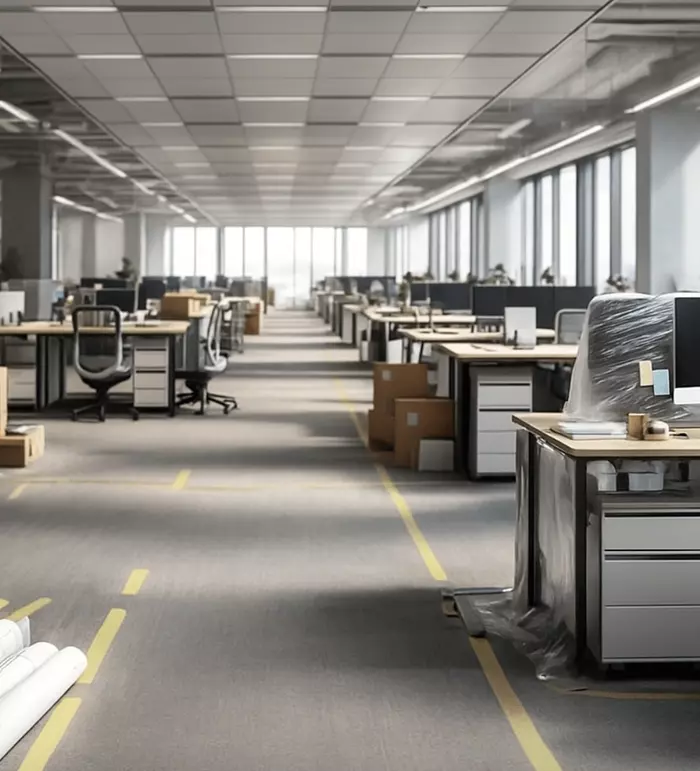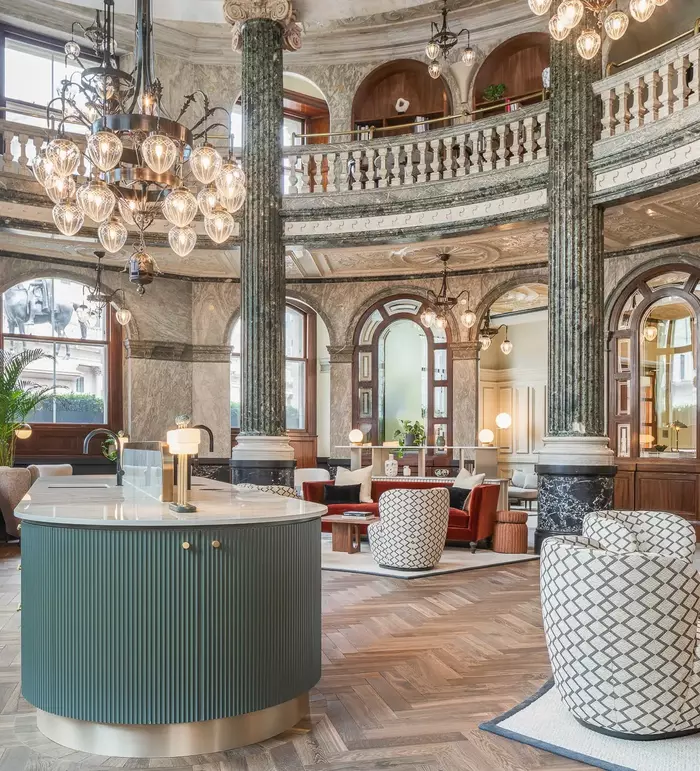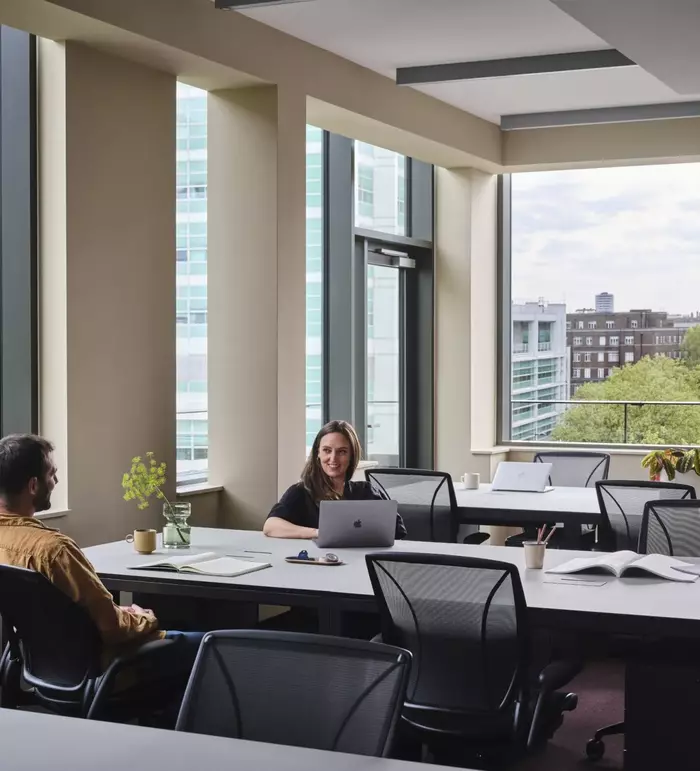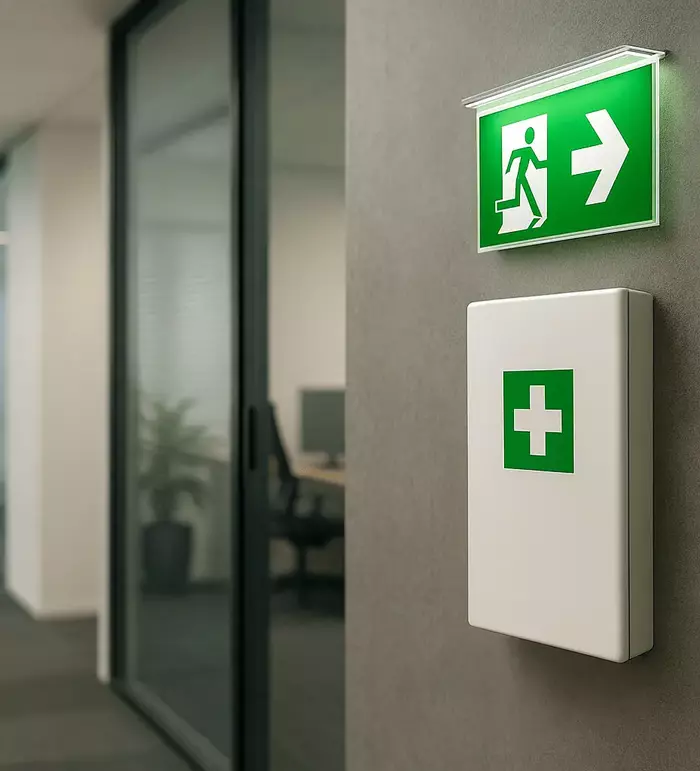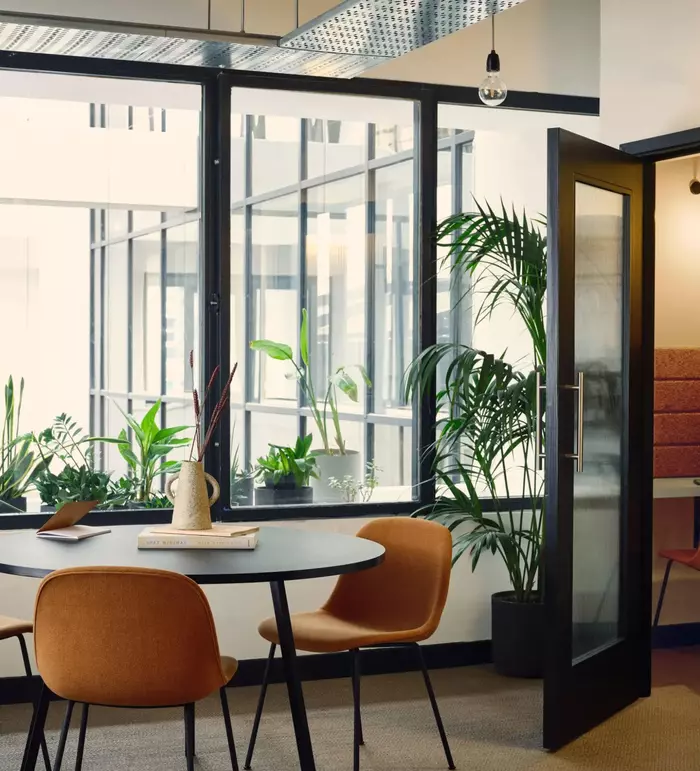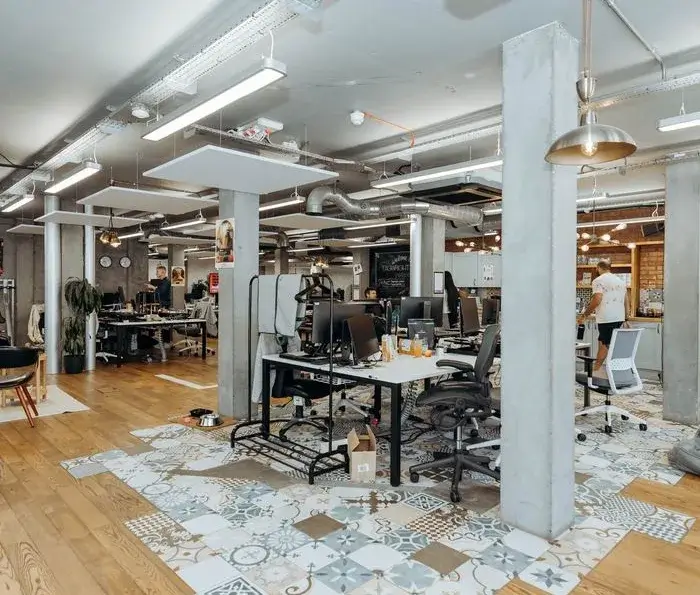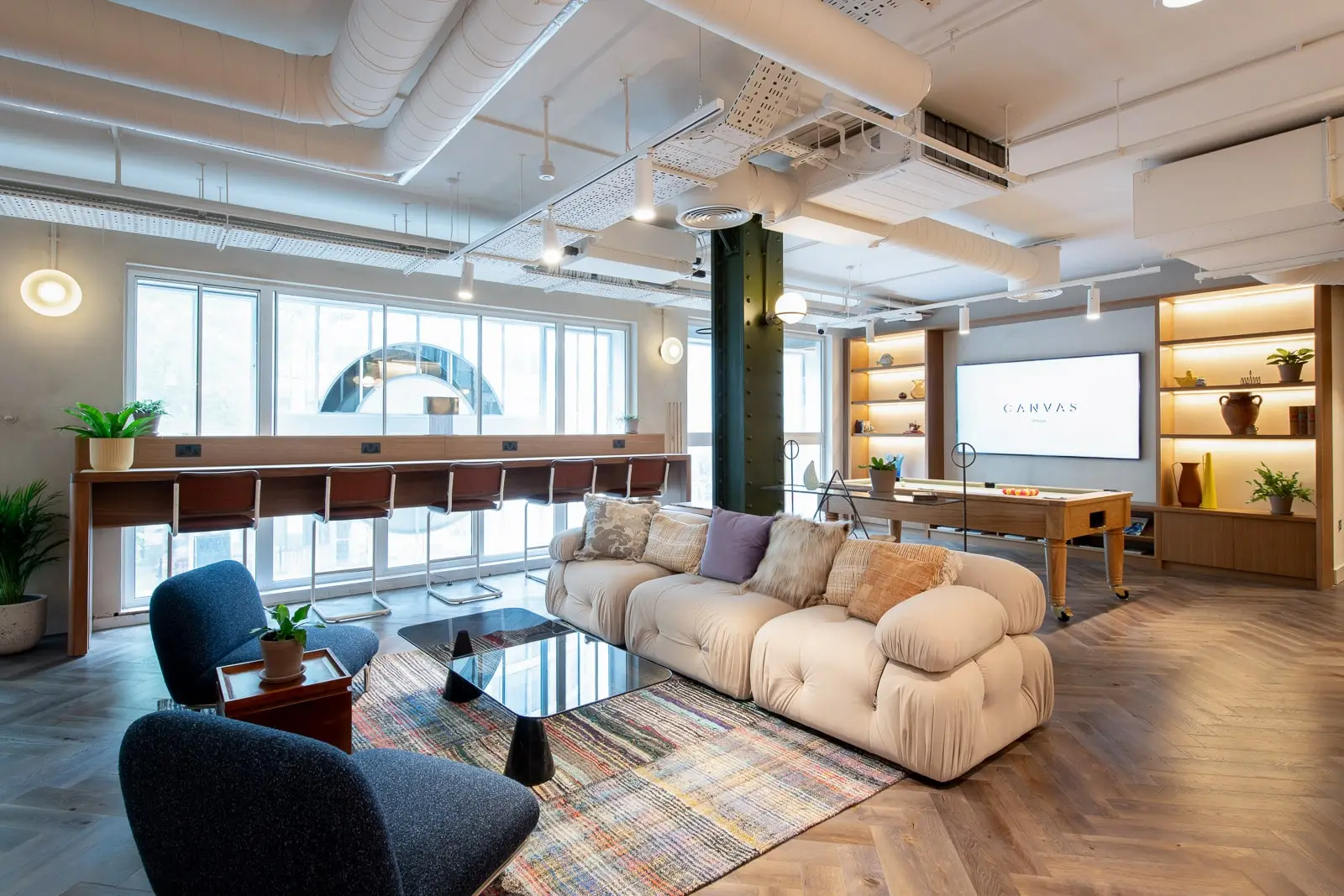Modern work can feel relentless. Your team switches between meetings, messages and deadlines, often without a moment to reset. That constant switching drains attention, dents morale and, in the end, knocks performance. It’s no surprise more employers are creating dedicated places to pause: workplace meditation rooms and broader “recharge” rooms.
These spaces aren’t about incense or hour‑long classes. They’re small, well‑designed rooms for 5–15 minute resets: a quiet breath, a short stretch, a moment of prayer, or simply sitting without notifications. Done well, they help people return to their desks calmer and sharper, and they signal that your culture values people as much as output.
The upside isn’t only personal. A quiet, restorative space helps reduce noise complaints, supports focus in demanding roles, and strengthens your message to candidates and clients: this is an organisation that designs the workplace for real work, and real people.
Key takeaways
- Workplace meditation rooms support short, restorative breaks that boost focus.
- Use clear etiquette & simple booking so workplace meditation rooms stay inclusive.
- Prioritise acoustics, warm light and soft finishes over gadgets.
- Track usage, mood ratings & performance metrics to show ROI.
- Include multi‑faith needs so one room serves many purposes.
What is a meditation & recharge room?
A meditation & recharge room is a small, acoustically treated space that anyone can use for a short reset. It’s flexible by design: a place to follow a breathing exercise, use a mindfulness app, pray, stretch lightly, or simply sit in quiet. Some organisations pair this with a separate parent & wellness room; others create one multi‑faith, multi‑purpose quiet room with clear etiquette.
The best rooms feel neutral and welcoming. No spiritual branding that excludes; just calm finishes, warm light and simple, comfortable furniture. Booking is quick, guidance is clear, and the tone is “short stays, shared fairly”.
The business case: productivity, retention & brand
Recovery fuels performance. Programmes that teach basic mindfulness skills show small‑to‑moderate improvements in anxiety and depression symptoms — helpful gains when people face constant interruptions. A widely cited meta‑analysis in JAMA Internal Medicine summarises these outcomes across multiple trials.
There’s a broad economic story too. The World Health Organization estimates that every $1 invested in treating common mental‑health conditions can return $4 through better health and productivity — a useful benchmark when you assess low‑cost, high‑impact interventions like quiet rooms.
Noise is another performance killer. Leesman’s workplace research (via Knoll) shows only about 30% of employees are satisfied with office noise, and noise control is a defining factor of effective workplaces. A reliable quiet room gives people an immediate escape valve when the floor gets loud.
Finally, amenities shape talent choices and attendance. CBRE’s UK occupier insights highlight the growing focus on employee experience — practical, purpose‑designed spaces that make the office a better day than home.
Design principles for a high‑usage space
Aim for simple and soothing. The first seconds inside should lower mental load: quiet, warm light, soft textures and an obvious way to sit or lie down without fuss. Most sessions will be solo; two to four people max is typical. Keep controls minimal and predictable.
Think through the arrival: where the room sits, what people see, and what they hear. Every choice should reduce stimulation. Consistency matters more than fancy features.
Location & acoustic strategy
Choose a spot off a quiet corridor, not beside lifts or cafés. Prioritise acoustic separation with high‑performance partitions, seals around the door, and sound‑absorbing finishes inside. A simple “in use” indicator avoids interruptions. If you can, mask corridor chatter with gentle sound outside the door.
Noise is one of the most common office complaints. Giving staff a dependable fallback helps them reset quickly and return to work with fewer errors — consistent with the Leesman findings on noise and effectiveness.
Lighting & materials
Pick warm, indirect lighting (around 2700–3000K) and make it dimmable. Avoid downlights aimed at faces. Use natural, tactile materials — wool rugs, cork, felt, timber — so the room reads as calm the moment you enter. Keep colours muted and consistent. If there’s daylight, use sheer blinds to soften glare.
Furniture & light‑touch tech
Mix seating and semi‑reclined options: a lounge chair with footstool, a low bench, a yoga bolster and a couple of floor cushions. Add a small shelf for eye masks and wipes. Tech should be invisible: a silent air purifier, a simple dimmer, and a QR code to a short library of 5–10 minute audio sessions. If you include soft background audio, make sure it resets to a low default after each booking.
Accessibility & inclusion (including prayer needs)
If the room also serves as a multi‑faith/prayer space, provide a clean floor area, hooks for garments, a chair for those who can’t sit on the floor, and, where possible, nearby washing facilities. Use a privacy lock that facilities can override in an emergency. Keep booking rules fair — short slots at peak times and limits on back‑to‑back sessions — so everyone gets a turn.
How to roll out a meditation room in 90 days
Start with a short needs check. Ask people: “Would you use a quiet room?”, “What would you use it for?”, “How long would you stay?” Keep the survey under two minutes to maximise replies. Form a small group with HR, Facilities and an employee panel that includes at least one faith representative.
Pick a modest room to fit first. Treat the acoustics, add warm, indirect light, choose simple furniture, and write clear etiquette. Pilot for four weeks. Gather quick feedback on comfort, booking and safety. Update, then scale to one room per 100–150 desks, or one per floor for larger sites.
Communicate the purpose like you would for meeting spaces. Add the guide to onboarding and encourage managers to lead by example — a two‑minute breathing exercise before a tough workshop can set the tone for calm, focused work.
Measuring the impact
Set simple measures from day one. Track bookings and dwell times. Add a 10‑second exit survey: “How calm do you feel now?” on a 1–5 scale. Pair that with team‑level indicators such as focus time on calendars, fewer context switches, or quality signals in complex work (for example, defect rates).
When reporting to leaders, tie the story to real costs and accepted benchmarks. The HSE’s 2023/24 report shows the scale of lost working days, and Deloitte’s UK analysis quantifies the cost of poor mental health; both help explain why small, practical interventions are worth backing. For broader ROI context, you can reference the WHO’s $4 return for every $1 invested in treatment of common conditions.
Common concerns & how to answer them
“Will people just use it for naps?”
Short restorative breaks are often the difference between an error and a great decision. Keep sessions brief (15–20 minutes), use glass sidelights for passive oversight with privacy film at eye level, and monitor usage patterns. Over time you’ll show it supports — not replaces — work.
“Is the impact real?”
You’re not prescribing therapy; you’re providing a quiet space that supports simple practices like mindful breathing or prayer. Evidence summarised in JAMA Internal Medicine shows small‑to‑moderate symptom improvements from mindfulness‑type programmes — meaningful in busy, high‑stimulus environments.
“How does this help return‑to‑office?”
People come in for a better workday than they get at home. Amenities that reduce friction — quiet rooms, ergonomic focus spaces, practical wellness rooms — make attendance feel worthwhile, which mirrors Gensler’s 2024 findings and CBRE’s UK insights on experience‑led workplaces.
How Flexioffices can help
If you’re refreshing your space — or choosing a new one — we can help you source the right floorplate and fit out meditation & recharge rooms as part of a wider wellbeing strategy. Our team matches clients with flexible, people‑first workplaces across 99% of the market and supports you end‑to‑end, from brief to move‑in.
Ready to see options? Book a tour or get a free consultation with our experts today.
Conclusion
Work is a series of sprints. Without moments to reset, performance slips. Workplace meditation rooms aren’t a nice‑to‑have; they’re a small, smart way to protect focus, lower stress and show your culture cares. Start simple, measure what matters, and scale what your people actually use.
FAQs
What size should a workplace meditation room be?
A single‑user room can be as small as 4–6m²; for two people, aim for 8–12m². Focus on acoustics, warm lighting and simple furniture rather than squeezing in lots of kit.
How long should people use the space?
Keep it short and shared: 5–15 minutes at peak times, with fair‑use rules that limit back‑to‑back bookings.
Can a meditation room double as a prayer room?
Yes. Keep the space neutral, add a clean floor area, provide hooks and a chair, and, if possible, place washing facilities nearby. Clear etiquette helps everyone feel welcome.
What safety features should we include?
Use a privacy lock that facilities can override in an emergency, choose furnishings with rounded edges, and keep walkways clear. Make controls simple and predictable.
How do we prove ROI to senior leaders?
Report bookings, dwell times and quick “calmness” scores, then link those to relevant team metrics. Use accepted benchmarks from HSE and Deloitte to frame the business value of reducing stress and improving in‑work performance, and add WHO’s ROI evidence for wider context.
